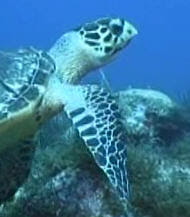Eating Local Fish in the Caribbean - WARNING
It was bound to happen. Someone got sick from eating the local fish at the gala on Saturday night. I ate safe and ate only the "HOT" chicken. The reality is that fish and shellfish ingestion accounts for much of the food-borne illness in the islands of the Caribbean. She got one of the seafood-borne neurotoxins. The bad thing is that they are thermo-stable and unaffected and cannot be detoxified by cooking, freezing, or salting.
The worst is Domoic acid (works in the brain) from shellfish who have ingested harmful algae. is a central neurotoxin which causes amnesic shellfish poisoning. Tetrodotoxin is a potent peripheral neurotoxin from the pufferfish, porcupinefish, ocean sunfish (mola), triggerfish, Blue-ringed  Octopus, and the Rough-skinned newt...also the product of certain bacteria they eat. Saxitoxin produced by bacteria and flagellates and concentrated in clams. Brevetoxin is also known as Neurotoxic Shellfish Poisoning. One common one is Ciguatera found in barracudas, moray eels, parrot
Octopus, and the Rough-skinned newt...also the product of certain bacteria they eat. Saxitoxin produced by bacteria and flagellates and concentrated in clams. Brevetoxin is also known as Neurotoxic Shellfish Poisoning. One common one is Ciguatera found in barracudas, moray eels, parrot fishes, groupers, trigger fishes and amberjacks. are most likely to cause ciguatera poisoning, but it has been found in other species. Scombroid-related histamine toxicity , a histamine mediated allergic like reaction, is most commonly in tuna, mahi-mahi, bonito, sardines, anchovies, and related species that are inappropriately handled, stored or process from inadequate refrigeration or preservation after being caught.
fishes, groupers, trigger fishes and amberjacks. are most likely to cause ciguatera poisoning, but it has been found in other species. Scombroid-related histamine toxicity , a histamine mediated allergic like reaction, is most commonly in tuna, mahi-mahi, bonito, sardines, anchovies, and related species that are inappropriately handled, stored or process from inadequate refrigeration or preservation after being caught.
Just add that to one of the hazards of attending medical school in the Caribe. Resolution: I don't eat the fish unless it is out of a can or pouch produced in a major country that is friendly to U.S. passports.





